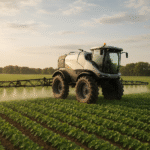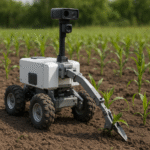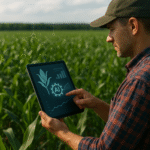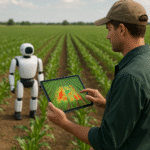The rapid evolution of precision agriculture has ushered in a new era of innovation, where Autonomous Sprayers stand at the forefront of transforming traditional farming practices. By integrating cutting-edge robotics, advanced sensors, and data-driven decision-making, these intelligent machines promise to optimize crop protection, reduce chemical usage, and promote sustainable productivity. This exploration delves into the core technologies, environmental and economic implications, robust safety frameworks, and prospective pathways guiding autonomous sprayers toward an increasingly responsible agricultural future.
Understanding the Technology Behind Autonomous Sprayers
At the heart of every autonomous sprayer lies a synergy of hardware and software components meticulously engineered for precision. Modern units deploy GPS-based navigation systems, LiDAR scanners, and multispectral cameras to map field topography, identify crop health variations, and adapt spray patterns in real time. Coupled with onboard computing power, machine learning algorithms translate raw sensor inputs into actionable commands, enabling the sprayer to navigate complex environments without human intervention.
Sensing and Mapping
- High-resolution GPS modules ensure centimeter-level accuracy in path planning.
- LiDAR sensors generate 3D models of field obstacles, preventing collisions.
- Multispectral imaging differentiates between crops, weeds, and soil stress zones.
By leveraging these precision tools, autonomous sprayers deliver targeted applications only where necessary, mitigating overuse of agrochemicals.
Control Systems and Actuation
From electronically controlled nozzles to adaptive pressure regulators, the actuation framework of an autonomous sprayer epitomizes versatility. Pulse-width modulation valves can switch spray segments on or off within milliseconds, allowing for variable-rate applications that align with crop density and pest pressure. Real-time feedback loops monitor nozzle performance, guaranteeing uniform droplet size and minimizing drift.
Environmental and Economic Impact
Reducing the ecological footprint of agriculture has never been more crucial. Autonomous sprayers present a compelling solution by curtailing excessive pesticide and fertilizer consumption, thus preserving biodiversity and safeguarding waterways from chemical runoff. Economically, improved input efficiency translates to cost savings for farmers while enhancing yield quality and consistency.
Enhancing Sustainability
- Site-specific application reduces total chemical usage by up to 50%.
- Lower drift potential protects non-target organisms and habitats.
- Automated record-keeping aids compliance with environmental regulations.
These benefits collectively support agroecosystems in maintaining long-term sustainability, contributing to soil health and pollinator vitality.
Boosting Farm Profitability
Beyond ecological gains, autonomous sprayers unlock financial advantages through labor savings and enhanced operational efficiency. Traditional manual spraying can be labor-intensive, subject to human error, and confined to daylight hours. Autonomous platforms work relentlessly, applying chemicals exactly when and where they’re needed, thus minimizing waste and maximizing production windows.
Safety Protocols and Operational Best Practices
Ensuring the safe deployment of autonomous sprayers requires comprehensive protocols encompassing design, software integrity, and field operations. Engineers adhere to stringent standards to guarantee fail-safe behaviors, while operators must follow rigorous training regimens to oversee and maintain equipment.
Design and Simulation
- Redundant sensors and emergency stop mechanisms mitigate system failures.
- Extensive software-in-the-loop simulations validate navigation and spraying modules under diverse scenarios.
- Electromagnetic compatibility testing prevents signal interference with control units.
By embedding these safety layers, manufacturers can assure stakeholders that autonomous sprayers operate within defined risk thresholds.
Field Deployment Guidelines
When introduced to real-world farms, the machines must adhere to established protocols:
- Pre-deployment calibration ensures nozzle efficiency and accurate GPS alignment.
- Boundary geofencing prevents trespass into sensitive areas or neighboring properties.
- Remote monitoring stations continuously stream telemetry to agronomists for oversight.
These measures foster trust in automation, demonstrating that unmanned systems can coexist safely alongside traditional farm equipment and personnel.
Case Studies: Success Stories in the Field
Farmers worldwide have begun showcasing the transformative potential of autonomous sprayers. In the Great Plains of the United States, a large-scale wheat operation reported a 40% cut in herbicide usage while boosting crop uniformity. Similarly, vineyards in Europe leveraged autonomous platforms for late-season disease control, preserving grape quality without disturbing delicate canopies.
Rice Cultivation in Southeast Asia
In one pilot program, remote-controlled sprayers monitored water levels in paddy fields using onboard moisture sensors. The adaptive spray logic reduced fungicide applications by 30%, as disease hotspots were identified before outbreaks could occur.
Biofuel Crops in Brazil
Energy crop farmers integrated autonomous sprayers with solar-powered charging stations, enabling uninterrupted operations across vast plantations. The result was a 50% reduction in logistic costs associated with refueling and maintenance, highlighting how renewable energy and robotics can synergize for large-scale agro-industrial ventures.
Future Prospects and Emerging Trends
The trajectory of autonomous sprayers continues to ascend, driven by constant advances in environmental analytics and machine learning. Upcoming models promise even tighter integration with drone-based scouting systems, creating a holistic farm management ecosystem. These aerial-ground platforms will share real-time imagery and agronomic insights, refining spray strategies for maximum impact.
Furthermore, developments in biodegradable formulations and smart adjuvants will harmonize perfectly with autonomous delivery systems, ensuring that each drop contributes positively to crop health. As regulatory frameworks evolve to embrace unmanned agricultural vehicles, wider adoption is anticipated, catalyzing a paradigm shift in how we protect and nurture the world’s food supplies.










